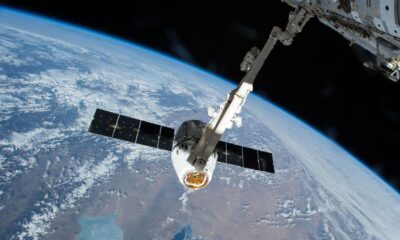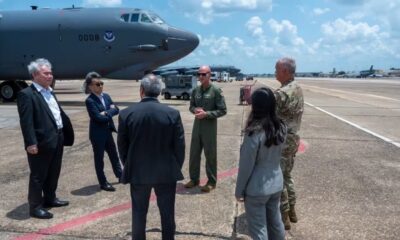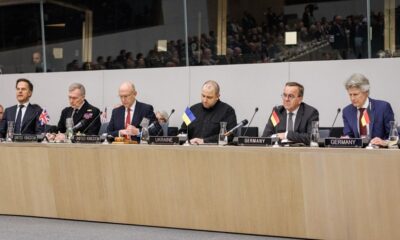Asia
Who are the North Korean generals Ukraine claims are in Russia?
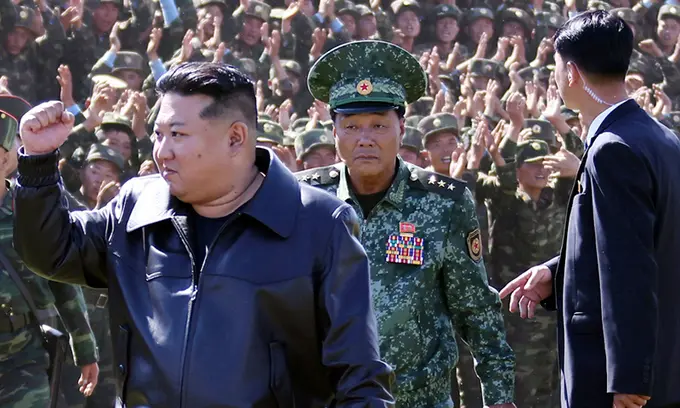
The Ukrainian government has named three North Korean generals it claims are accompanying thousands of Korean People’s Army soldiers sent to Russia to support Moscow in the war against Ukraine.
In a statement to the UN Security Council on Wednesday, the Ukrainian delegation reported that the three generals were among at least 500 North Korean officers sent to Russia.
According to the statement, the North Korean troops are expected to be organized into at least five units of 2,000–3,000 soldiers each and integrated with Russian troops to obscure their presence.
Russia did not deny the allegations.
At the same Security Council meeting, Russian envoy Vassily Nebenzia stated that Russia’s military cooperation with North Korea does not violate international law and that Moscow has the right to seek assistance from its partners, just as Ukraine does.
Ukraine reported that the top general overseeing special forces, including the XI Corps—also known as the Storm Corps—which South Korean intelligence indicated had been sent to Russia, is Colonel General Kim Yong Bok.
Michael Madden, an expert on the North Korean leadership at the US-based Stimson Center, said Kim’s role appears to be broader, as he commands a unit that includes the XI Corps and light infantry troops and is assigned to special missions for North Korea’s main spy agency.
Kim has attended seven events this year, including special forces exercises with North Korean leader Kim Jong Un.
“This is a major and almost unprecedented mission for the Korean People’s Army,” Madden said, adding that he believes the general is in Russia as Kim Jong Un’s representative.
Madden noted that Kim Yong Bok may eventually hand over command to an officer of senior colonel or major general rank.
Other senior officers identified by Ukraine include Colonel General Ri Chang Ho, deputy chief of the General Staff and head of the General Reconnaissance Bureau, and Major General Sin Kum Cheol, head of the Main Operations Directorate.
Ri, who has led North Korea’s main intelligence agency since around 2022, was previously sanctioned by South Korea.
Like Kim Yong Bok, Ri has accompanied Kim Jong Un to numerous events this year, including an inspection of a naval base on North Korea’s east coast.
Madden added that Sin’s career trajectory is unclear, but given his one-star rank, he is likely to take command of North Korean troops in Russia after Kim Yong Bok and Ri Chang Ho depart.
Asia
AUKUS deal under scrutiny as US reconsiders its commitment
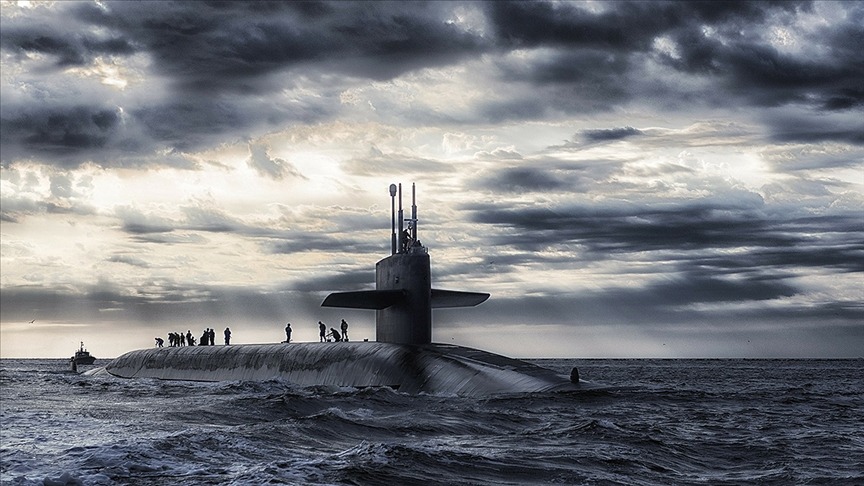
The Pentagon has initiated a review of the AUKUS submarine agreement, which was signed with the United Kingdom and Australia in 2021.
According to six sources familiar with the matter who spoke to the Financial Times, the review process, which will determine whether the US should cancel the project, is being led by Elbridge Colby, a senior defense official who has previously expressed skepticism about AUKUS.
The review has sparked concern in London and Canberra.
Some critics and experts have argued that the AUKUS deal could undermine US national security, as the navy is already struggling to produce enough American submarines to counter China’s growing naval power.
Australia and the UK plan to jointly produce a new class of attack submarines, named SSN-Aukus, which are scheduled to enter service in the early 2040s. However, the US has committed to selling Australia up to five Virginia-class submarines starting in 2032 to bridge the gap as its current fleet is retired. This commitment would almost certainly be voided if the US were to withdraw from AUKUS.
Last year, Colby wrote on X that he was skeptical of AUKUS, stating it would be “insane” for the US to reduce its number of nuclear-powered attack submarines, known as SSNs, in the event of a conflict over Taiwan.
In March, Colby said it would be “great” for Australia to have SSNs but warned of a “very real threat of conflict in the coming years” and that US SSNs would be “absolutely essential” for defending Taiwan.
Skeptics of the nuclear technology-sharing agreement have also questioned whether the US should help Australia acquire submarines without a firm commitment to use them in a potential war with China.
Kurt Campbell, the Biden administration’s deputy secretary of state and an American architect of AUKUS, emphasized last year the importance of Australia having SSNs that could work closely with the US in a conflict over Taiwan. Canberra, however, has not linked its need for these vessels to a potential conflict over Taiwan.
This review comes at a time of growing anxiety among US allies about the potential policies of a new Trump administration. Colby has told the UK and other European allies to focus more on the Euro-Atlantic region and reduce their activities in the Indo-Pacific.
A source close to the AUKUS discussions said Canberra and London were “incredibly worried” about the review of the agreement.
“AUKUS is the most significant military and strategic initiative between the US, Australia, and the UK in generations,” Campbell told the Financial Times.
“Efforts to enhance coordination, defense spending, and common objectives should be welcomed. Any bureaucratic attempt to undermine AUKUS would create a crisis of confidence among our closest security and political partners,” he added.
Pressure to increase defense spending
The Pentagon has been pressuring Australia to increase its defense spending. US Secretary of Defense Pete Hegseth called on Canberra this month to raise its spending from 2% to 3.5% of its GDP. In response, Australian Prime Minister Anthony Albanese stated, “We will determine our own defense policy.”
Charles Edel, an Australia expert at the CSIS think tank in Washington, noted, “Australia’s defense spending is increasing gradually, but not as quickly as that of other democratic states, and it is not at a level sufficient to cover the costs of either AUKUS or its current conventional forces.”
John Lee, an Australian defense expert at the Hudson Institute, said the pressure on Canberra is mounting as the US focuses on deterring China from attacking Taiwan within this decade. Lee added that if Australia does not increase its defense spending to 3% of its GDP, its navy will rapidly weaken.
“This would be unacceptable for a Trump administration,” Lee stated. “If Australia continues on this path, it is likely that a Trump administration would freeze or cancel Pillar 1 of AUKUS [the part related to submarines] to compel Australia to increase its military spending within the next five years.”
America First
A source close to the review said it was unclear whether Colby was acting alone or as part of a broader effort by the Trump administration. “The general consensus is that the former is true, but the uncertainty has confused Congress, other government departments, and Australia,” the source said.
A Pentagon spokesperson stated that the department is reviewing AUKUS “to ensure this initiative from the previous administration is aligned with the president’s ‘America First’ agenda.” The spokesperson added that Hegseth has “made it clear he intends for the department of [defense] to focus primarily on the Indo-Pacific region.”
Several people familiar with the matter said the review would last 30 days, though the spokesperson declined to comment on the timeline. “Any changes to the administration’s approach to AUKUS will be announced through official channels when appropriate,” they said.
A British government official said the UK was aware of the review. “This is sensible for a new administration,” the official noted, adding that the Labour government is also reviewing AUKUS.
“We have reiterated the strategic importance of the UK-US relationship, announced additional defense spending, and confirmed our commitment to AUKUS,” the official added.
The Australian embassy in Washington declined to comment.
The AUKUS agreement and China’s reaction
The AUKUS agreement, aimed at helping Australia build a fleet of nuclear-powered submarines through technology transfer from the US and the UK, was signed on September 16, 2021.
Under the security pact, named from an acronym of the three countries’ names, at least eight nuclear-powered submarines will be built at shipyards in Adelaide, the capital of South Australia.
The agreement is widely seen as a pact to counterbalance China’s military power in the region.
China has reacted strongly to the deal, emphasizing that the alliance will undermine regional peace and stability, as well as international efforts toward nuclear non-proliferation.
Asia
Pakistan boosts defense spending by 17% amid tensions with India
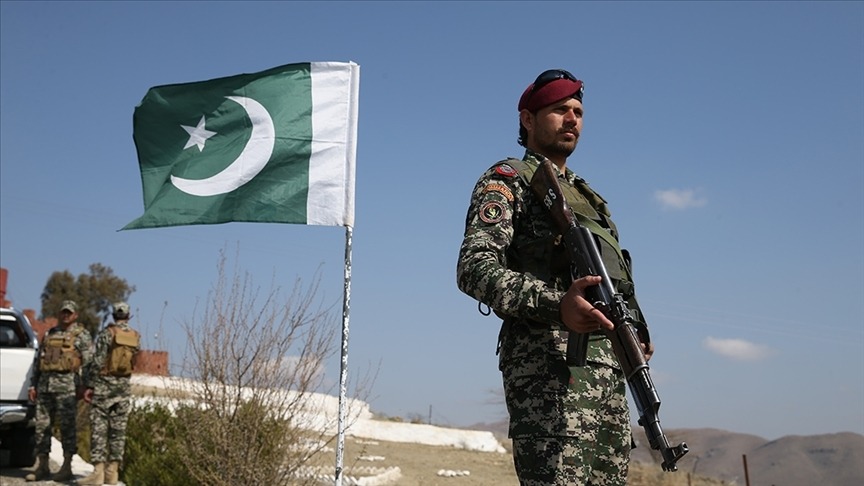
Pakistan has significantly increased its defense spending in its latest budget, citing growing security demands following recent military tensions with India. In contrast, development spending has been curtailed to meet the fiscal discipline conditions set by the International Monetary Fund (IMF).
On Tuesday, Pakistan announced its budget for the 2026 fiscal year, which begins on July 1. The total expenditure is set at $62 billion, with $29 billion allocated for debt financing. The most notable development in the budget is the allocation of $9 billion for defense spending, an increase of approximately 17% from the previous year.
This move comes as Pakistan reassesses its military preparedness following recent conflicts with India. In the four-day conflict that began on May 7, 51 people were killed on the Pakistani side, while at least 16 lost their lives on the Indian side.
Experts have noted that the increase in defense spending was inevitable.
“In Pakistan, the most serious conflict with India in several decades will certainly create an incentive to increase defense spending,” South Asia analyst Michael Kugelman told Nikkei Asia. “The public’s support for efforts against India gives civilian and military leaders the political space to take these steps,” he added.
Some believe the government should allocate even more to defense. One group advocating for this is Tola Associates, a tax advisory and consulting firm. In a recently published budget report, the company stated that defense spending should be increased by 32%. “Due to the state of war with the neighboring country and the recruitment of new army personnel, it is recommended that the defense budget for the 2026 fiscal year be increased to $10 billion,” the report noted.
Other experts argue that the issue is not just about how much the total defense budget will increase. “India’s defense spending remains nearly nine times that of Pakistan,” Syed Muhammad Ali, an Islamabad-based security analyst, told Nikkei. “This large gap indicates that Islamabad wants to deter India credibly and cost-effectively without engaging in a costly arms race in the region.”
Other officials and experts told Nikkei that Pakistan will focus on strengthening its air defense capabilities among its three armed forces.
“Pakistan will purchase HQ-19 missiles from China to strengthen its air defense against future Indian attacks,” a government official, speaking to Nikkei on the condition of anonymity, said. The HQ-19 is a Chinese-made surface-to-air missile system designed to counter medium-range ballistic missiles.
Kugelman said that Pakistan will make decisions on defense spending to strengthen weak areas revealed in the recent conflict, with such air defense systems at the top of the list. “India was able to deploy missiles and drones deep into Pakistani territory, and it did so quite intensively. This is a key area where we can expect some of the funding increase to be directed,” he added.
Ali also believes that air defense and related areas will be a priority. “Contrary to traditional land-air-sea warfare concepts, the role of air and space power, such as beyond-visual-range air combat, electronic warfare, drone warfare, missile warfare, and cyber warfare, is increasingly growing,” he said.
However, Pakistan’s budget is also under strict scrutiny from the IMF, which signed a $7 billion loan agreement with Islamabad last September.
“As Pakistan remains in the 37-month IMF program until 2027, the Fund plays a central role in shaping the budget,” Naafey Sardar, an assistant professor of economics at St. Olaf College in the US, told Nikkei. “Without the IMF’s approval, Pakistan cannot receive the financing tied to the program or support from other multilateral lending institutions,” he added.
“The IMF will push for stricter compliance and a broader tax base. This increases the likelihood of new tax hikes in certain sectors and limited relief for the salaried class,” he stated.
The IMF’s demand for strict budget implementation has led Pakistan to cut its development spending.
In the upcoming budget, Pakistan has allocated $3.5 billion for development expenditures, a sharp decrease of $1.4 billion from the previous budget.
“This cut will further hinder and potentially slow down significant social and infrastructure projects, especially since development spending has repeatedly been the target of budget cuts in recent years to meet IMF program objectives,” Sardar told Nikkei.
“In such a scenario, when the defense budget increases, the [development] budget allocated for health and education decreases,” said Tahir Naeem Malik, a professor at the National University of Modern Languages in Islamabad.
“With a population of 250 million, Pakistan has great needs in these sectors. This creates a contradiction: should the focus be on human development or on defense?” Malik asked.
Asia
Huawei founder claims chips are a generation behind the US

The founder of Huawei has stated that the United States is overestimating the capabilities of the Chinese chip manufacturer, even as trade negotiations, including export controls, continue between Beijing and Washington.
In a rare interview with China’s state-run newspaper People’s Daily on Tuesday, Ren Zhengfei said that Huawei’s Ascend chip, the main domestic rival to Nvidia’s products in China, is “still one generation behind the US.” He added, “The US is overestimating Huawei’s capabilities; we are not that strong yet.”
Ren’s comments follow recent warnings from Nvidia CEO Jensen Huang about Huawei’s advancements in artificial intelligence (AI) chips. Huang argued that Washington’s restrictions on the US chipmaker’s sales to China have inadvertently created a “formidable” competitor, threatening America’s dominance in AI technology.
The US and China began a new round of trade negotiations in London on Monday, with Washington’s export controls on key technologies on the agenda.
During the initial round of talks in Geneva, the US did not bring up export controls. However, Beijing’s recent restrictions on certain critical rare earth elements and minerals used in automobile manufacturing, which threaten to shut down factory lines in the US, Europe, and Japan, have pushed the issue to the forefront of trade discussions.
Huawei has benefited from Washington’s ban on Nvidia chip shipments to China, as Chinese tech giants have accelerated their purchases of Ascend chips and made preparations to adopt Huawei’s technology.
Still, most Chinese AI companies, including DeepSeek, rely on Nvidia chips to train the large language models (LLMs) that power their AI tools. For less complex tasks, such as inferencing models to generate responses in tools like chatbots, domestic alternatives are increasingly being used.
Analysts and Huawei researchers have previously noted technical difficulties when using the company’s chips to train LLMs, citing challenges in getting the chips to work together and distribute the computational workload effectively.
On Tuesday, Ren implied that the company has made significant strides in resolving these issues, stating that Huawei can “compensate” for lower performance through cluster computing, which links multiple chips to boost AI server power.
“By using clustering and stacking, our computing results are comparable to the best in the world,” he said.
Ren mentioned that Huawei invests 180 billion yuan ($25 billion) annually in research and development, with 60 billion yuan dedicated not to product development but to basic research aimed at groundbreaking discoveries.
He also noted that China possesses distinct advantages in developing its technological capacity.
“Artificial intelligence depends on abundant electricity and an advanced network infrastructure,” he explained. “China’s power generation and grid systems are world-class. Our telecommunications infrastructure is one of the most advanced in the world.”
-

 Middle East2 weeks ago
Middle East2 weeks agoLindsey Graham issues threat to Greta Thunberg and Gaza Freedom Flotilla
-

 Russia2 weeks ago
Russia2 weeks agoUkraine attacks Russian strategic bomber bases with truck-launched UAVs
-

 Opinion2 weeks ago
Opinion2 weeks agoWhat does the US State Department’s criticism of Europe mean?
-

 Europe2 weeks ago
Europe2 weeks agoGerman army to maintain Indo-Pacific security role despite US focus on Russia
-
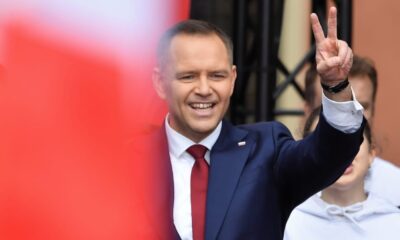
 Europe2 weeks ago
Europe2 weeks agoPoland’s presidential election: Karol Nawrocki secures victory
-

 Europe2 weeks ago
Europe2 weeks agoGazprom’s May gas exports to Europe via TurkStream show increase
-
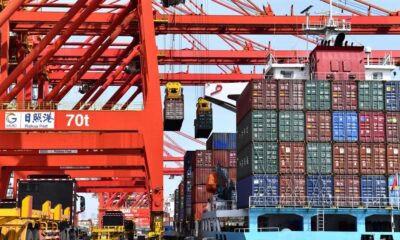
 Asia1 week ago
Asia1 week agoOECD forecasts slower Chinese economic growth due to trade war
-
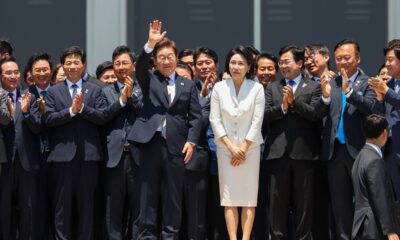
 Asia1 week ago
Asia1 week agoLee Jae-myung inaugurated as South Korea’s new president, vows unity and economic revival


